Fostering Creativity: How the EU Supports the Development of Culture in Armenia
It is another rehearsal on the student stage of the Yerevan State Institute of Theatre and Cinematography. Maria, Tanya, Zhorzh, and David seem to be dismantling invisible barriers; their bodies move closer, then drift apart as they search for new points of connection, trying to build a bridge between two worlds.
For these four students, the theatre is the one rare physical and philosophical space where they can share their art with the audience.
Greg Avetisyan, their friend and one of the first to champion their creativity, applied last year to the Culture Moves Europe mobility initiative, funded by the European Union through the Creative Europe programme’s CULTURE Strand, so that these students could also perform on European stages.
“I had reached out to many theatres, and the team at Micro Teatro Terra Marique in Perugia, Italy, under the direction of Claudio Massimo Paternò, was the one that responded. So, we travelled to Italy for ten days. Claudio, who had never communicated through sign language before, worked individually with the students and guided them throughout the process. I can say with confidence that this was an unprecedented opportunity for Armenia, as well as for these young people to show that they, too, are creative individuals with something meaningful to say on stage. It was an inspiring journey for both sides, and for some of them, it was even their first time travelling,” Greg Avetisyan recalls.
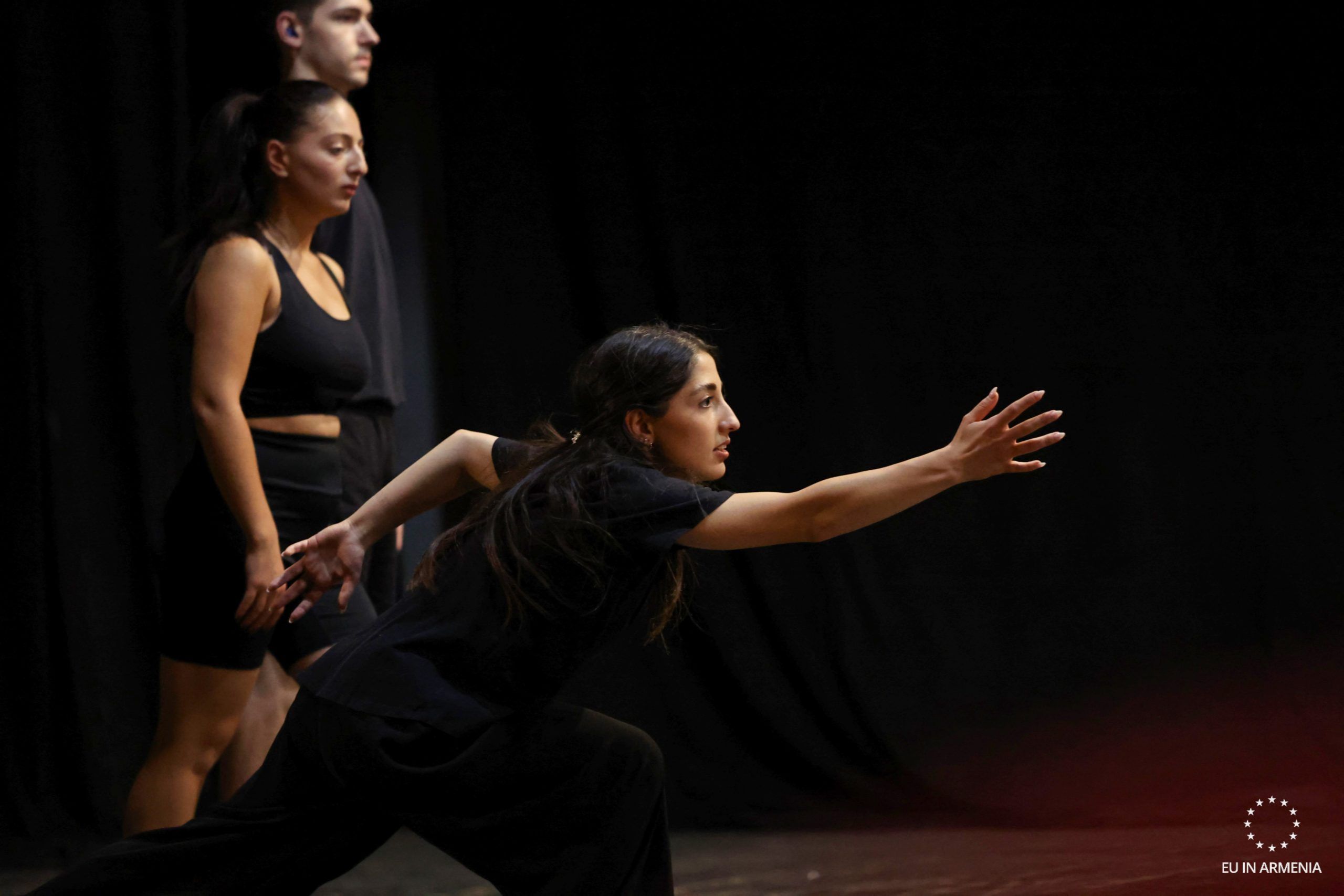
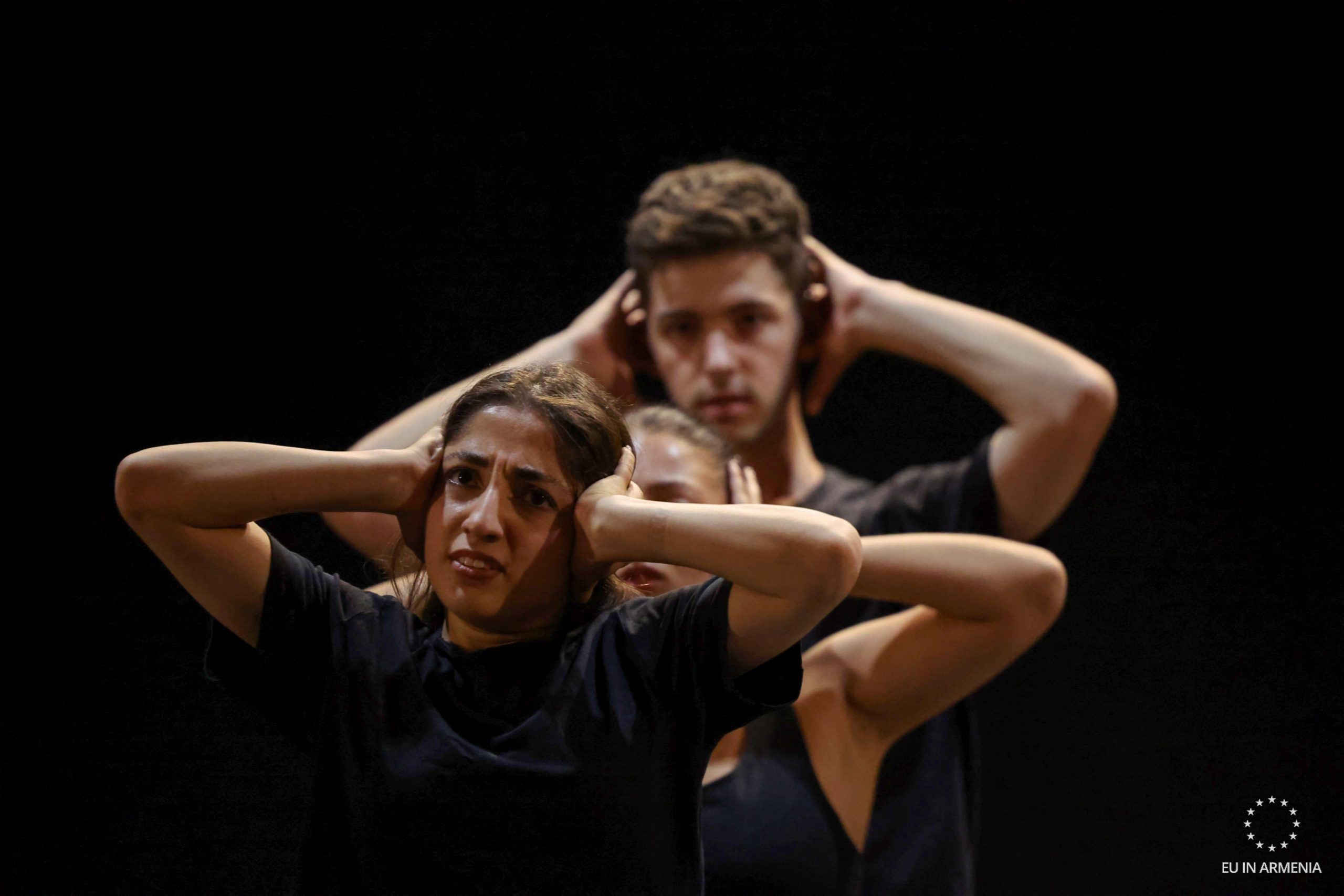
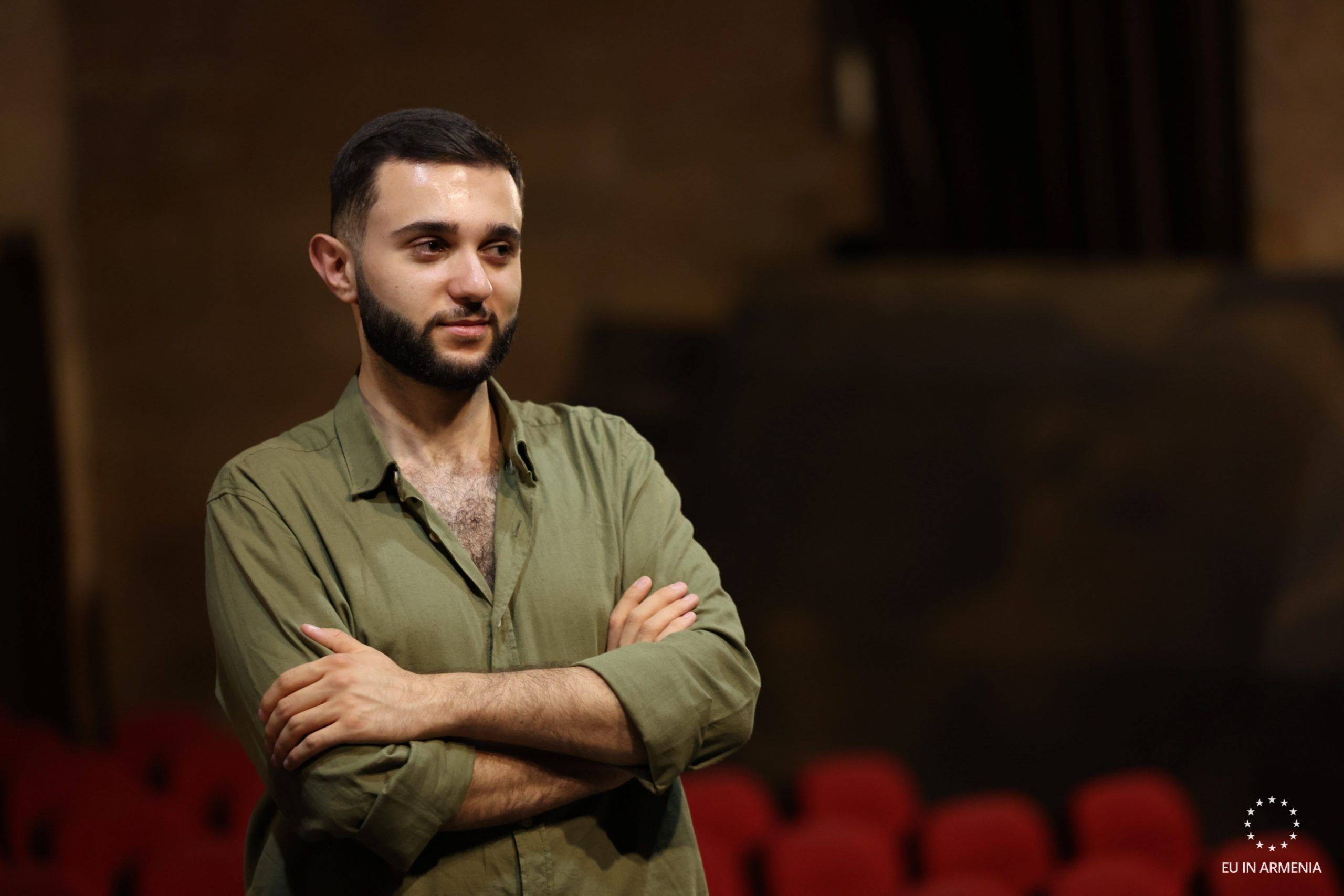
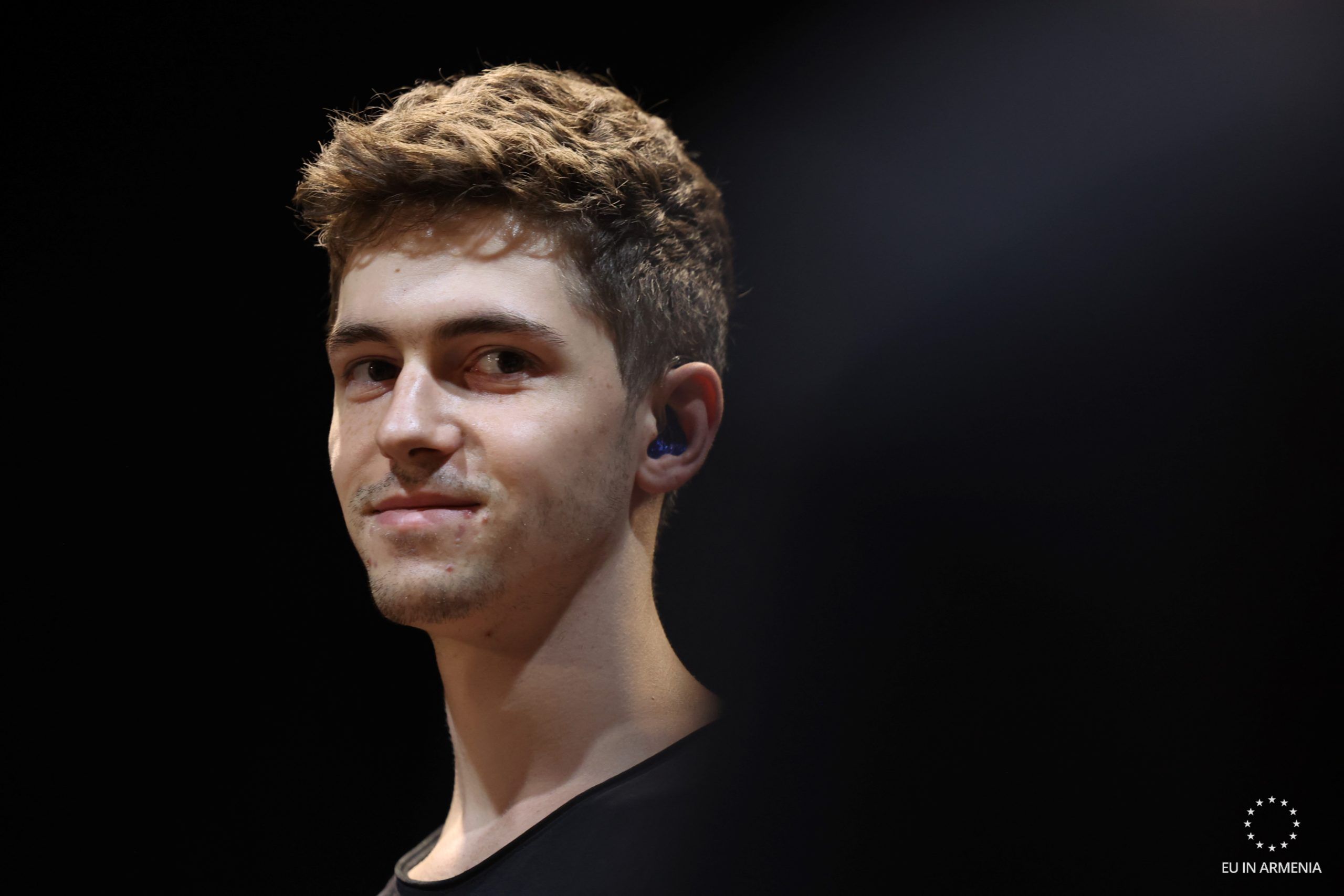


In the photo (from left to right): Greg Avetisyan, Maria Poghosyan, Zhorzh Lalayan, Tanya Hambardzumyan, David Amirshatyan.
According to the young artists, performing in front of both Italian and Armenian audiences comes with its own distinct energy. Blending these experiences has become a major step in their careers, pushing them toward new creative work.
Ani Hovsepyan, Coordinator of the Creative Europe Armenia Desk, emphasizes that inclusion, gender equality, and environmental sustainability are among the core priorities of the Creative Europe programme.


“Creative Europe” is a cornerstone programme in Armenia, aimed at supporting the cultural sector and artists. By engaging diverse social groups and expanding its geographical reach, it becomes a foundation for positive change, opening new horizons and creating opportunities for fresh, international collaborations. When applying to the programme, it is important to take its priorities into account; however, artists should not feel the need to limit their creative ideas. They can be innovative and allow their imagination to take them wherever it leads,” says Hovsepyan.
New Books by Women Writers: How They Found Their Way to Readers’ Tables
In a book-filled room at EDGE Publishing House, a circle of women exchanges stories, each one reflecting the lives of women across time and place. Co-founders Liana Shiroyan, Arevik Ashkharoyan, Emma Kirakosyan, and Anna Baghramyan are implementing an important initiative — “Women–not Victims: The Aftermath of War” — made possible through co-funding from the European Union’s Creative Europe programme. Launched in October 2023 and set to conclude in March 2026, the project is aimed at promoting the circulation of European literary works.

In the photo (from left to right): Emma Kirakosyan, Arevik Ashkharoyan, Liana Shiroyan, Anna Baghramyan.

Four women writers, four wars, and four different stories — Count-Out Rhyme by Tamta Melashvili, A Cherrywood Table by Marica Bodrožić, Money from Hitler by Radka Denemarkova, and The Sleeping Voice by Dulce Chacón — are already available to readers.
Written and translated by women authors and translators, these books have reached readers’ tables thanks to the support of the European Union.
Soon, works by Ukrainian writer Haska Shyyan and Armenian author Narine Kroyan will also become available. Kroyan’s The Time of the Flies will be translated into French and Spanish.
“We began thinking about this project after the 2020 war — to highlight the voices of women writers, involve women translators, and focus on languages that are scarcely represented in our market. We selected books in which the authors reflect on wars from different periods through personal stories,” says Liana Shiroyan.
From the Second World War to contemporary conflicts, these books, through the personal experiences and stories of their characters, act as a unique voice of protest against war.
“These are contemporary authors who continue to write and create, with the exception of the Spanish writer. It was essential for us to bring these books to Armenian readers — and to our own literary community, particularly women writers — so they can engage with how their colleagues abroad portray similar themes,” explains Arevik Ashkharoyan.
From the perspective of impact and the traces they leave behind, wars often recognize no borders — they alter millions of lives and continue to exist even thousands of kilometers away from the front lines.
“There are no sounds of bullets in these books,” says Anna Baghramyan.
Each of the works stands as a unique chronicle of its time — of events, and of deeply human experiences.
“These are stories that have been personally lived or deeply empathized with. They complement the histories found in textbooks, and together with them, render reality in much clearer shades,” adds Emma Kirakosyan.
European Cooperation Projects
The Creative Europe programme also co-finances European Cooperation Projects.
Arevik Ashkharoyan, who is also the founder of the ARI Literature Foundation, has implemented — together with partners from Georgia and Ukraine — the project “Visual Stories from Armenia, Georgia and Ukraine,” within the framework of these cooperation initiatives. The two-year project, dedicated to the development of the comics genre, is set to conclude in December 2025.

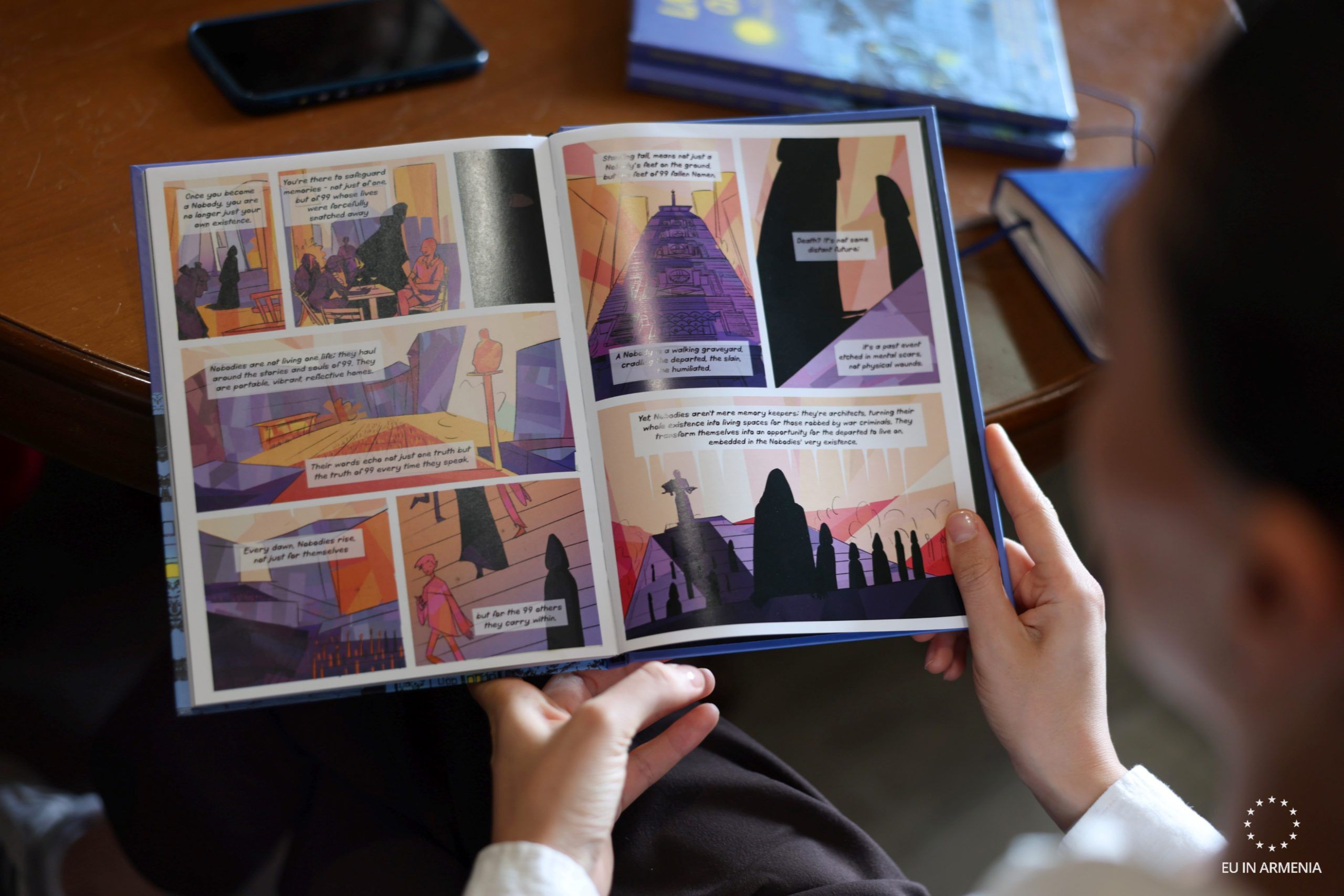
“Our goal was to tell serious stories through comics. We hope that this project will help develop the comics culture in all three countries. Even two of the world’s most famous comics address very serious topics — the Holocaust and women’s rights in Iran. In addition to creating and publishing “The Last Night on Earth” comic, we held online webinars with international experts and organized residency programmes in Armenia, Germany, and the Netherlands for the writers and illustrators involved in this project,” says Arevik Ashkharoyan.
Some European Cooperation Projects are implemented not under the management of Armenian institutions, but with their participation.
Lilit Stepanyan, founder of the Today Art Initiative, talks about five such projects.
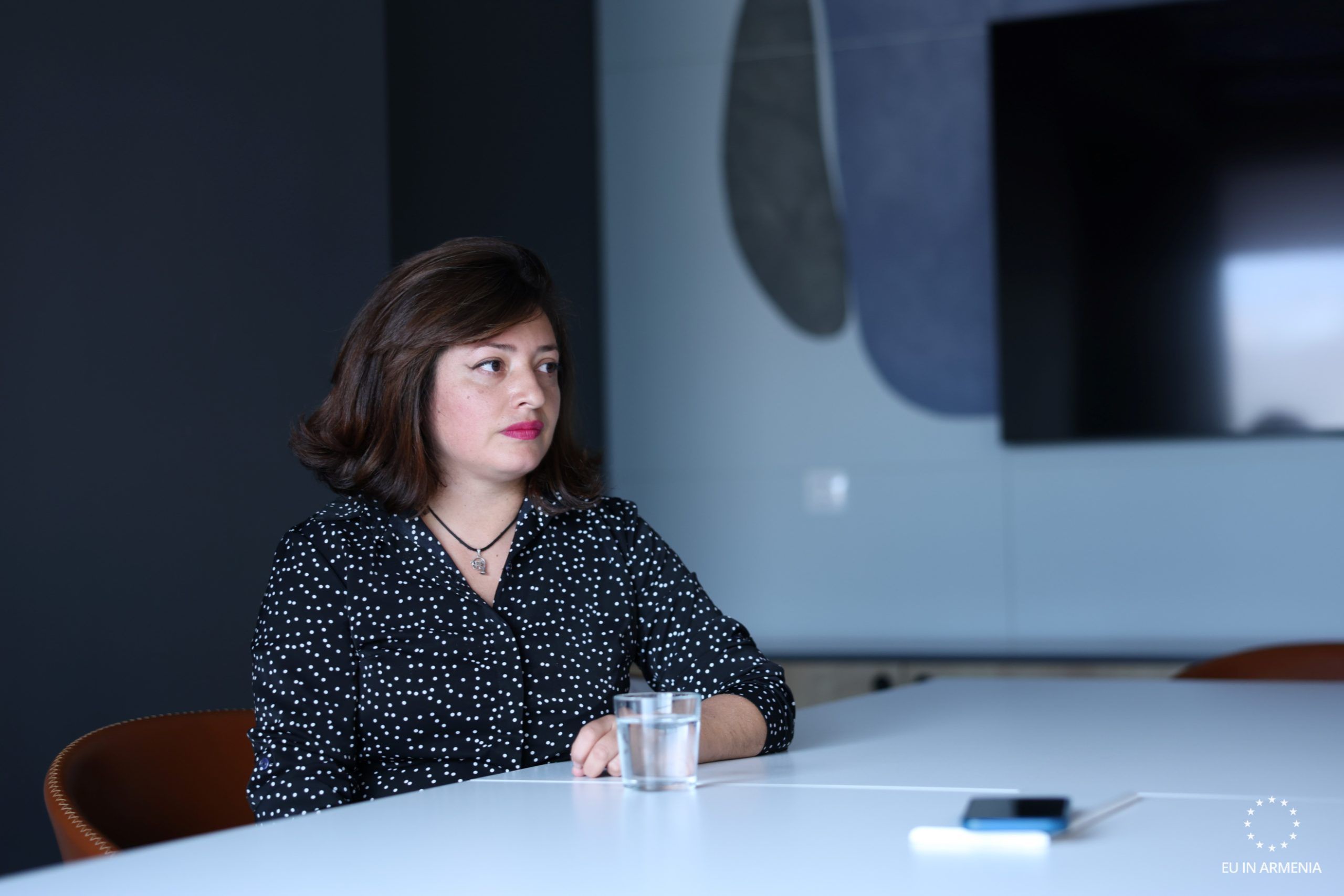
“The first is the Open Art Spaces in Synergy project, a network of art spaces across Europe in 13 countries, including Armenia. The spaces are located in different European cities, and in Armenia, we selected the town of Talin. The goal is to develop joint programmes and create conditions for collaboration among artists. The second project is Free Radicals – Toolkit for Plant Biodiversity in Arts and Culture. Artists study the biodiversity of a given area, with a focus on disappearing tree species and plants. By establishing connections between culture and science, artists create their works at the conclusion of the research.”
The third project is HH – Transeuropean Journeys, a three-year initiative aimed at promoting the circulation of literature, which will involve translating the works of five Armenian authors. Collaboration remains its guiding principle.
The fourth project, TT8 – Transition to 8: European Societies in Flux, focuses on technologies and air pollution. In the final project, EPESEP – Equal Pay, Equal Show, Equal Pension, women writers are involved in meetings and collaborative creative work. Surveys are also conducted with them to determine whether literary activity fully meets their financial needs.
All parties involved in projects under the CULTURE Strand emphasize that EU support — both financial and methodological — is one of the most crucial factors for success. It enables established artists and cultural professionals from different countries to work together and produce works of unique and significant value.
The European Union remains committed to supporting culture. The projects mentioned in this article highlight only some of the EU-supported projects in Armenia.
The European Union’s Creative Europe initiative brings together a range of actions aimed at supporting the creative, cultural, and audiovisual sectors.
The programme is made up of three main strands: CULTURE, MEDIA, and CROSS-SECTORAL.
Currently, Armenia is fully participating in the CULTURE Strand and partially in the CROSS-SECTORAL Strand, under which the Creative Europe Armenian Desk operates.
Within the CULTURE Strand, six areas receive funding, three of which — the Culture Moves Europe mobility programme, the circulation of European literary works, and European Cooperation Projects — are ongoing initiatives. Armenia has not yet joined the MEDIA Strand.